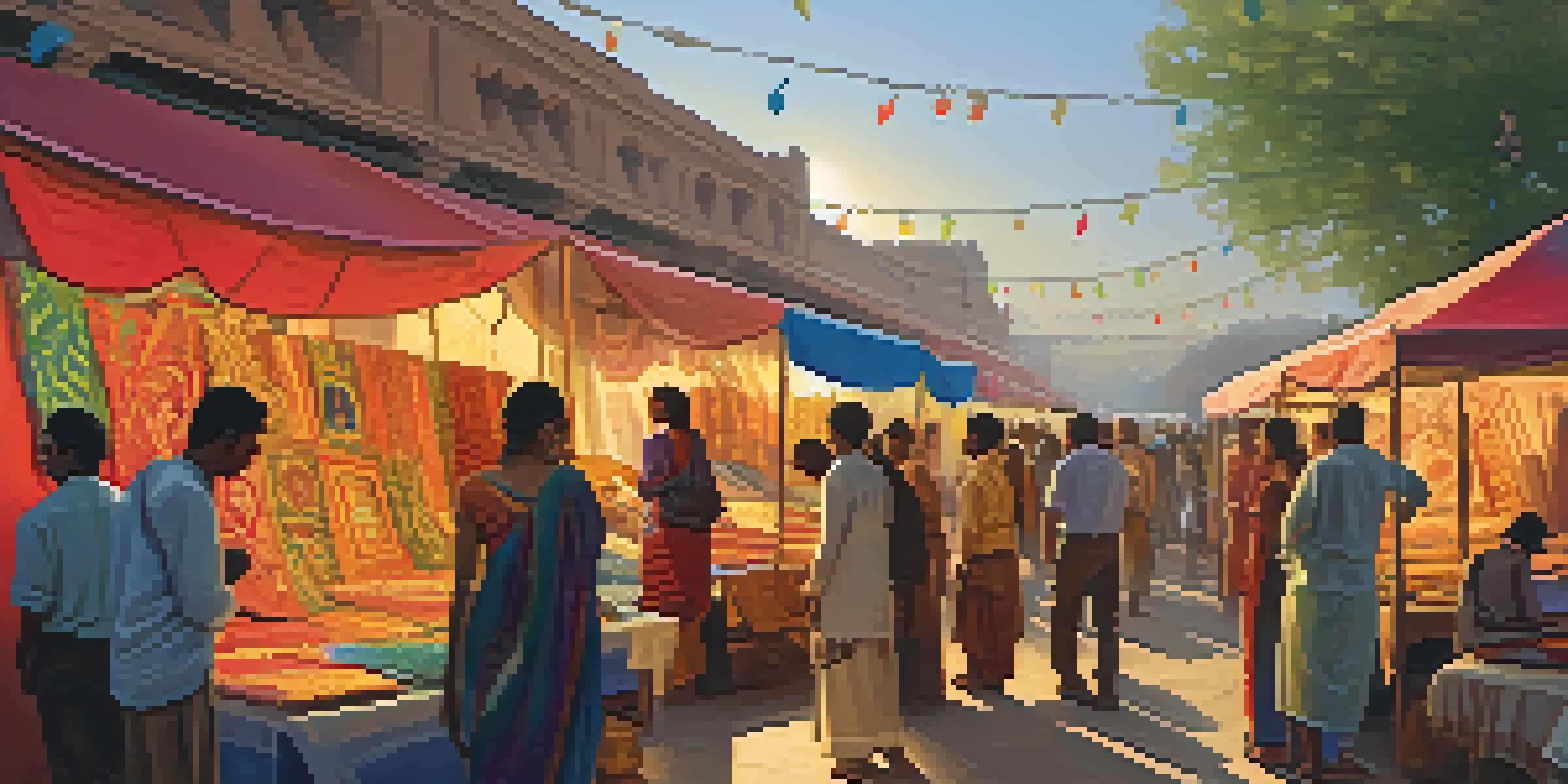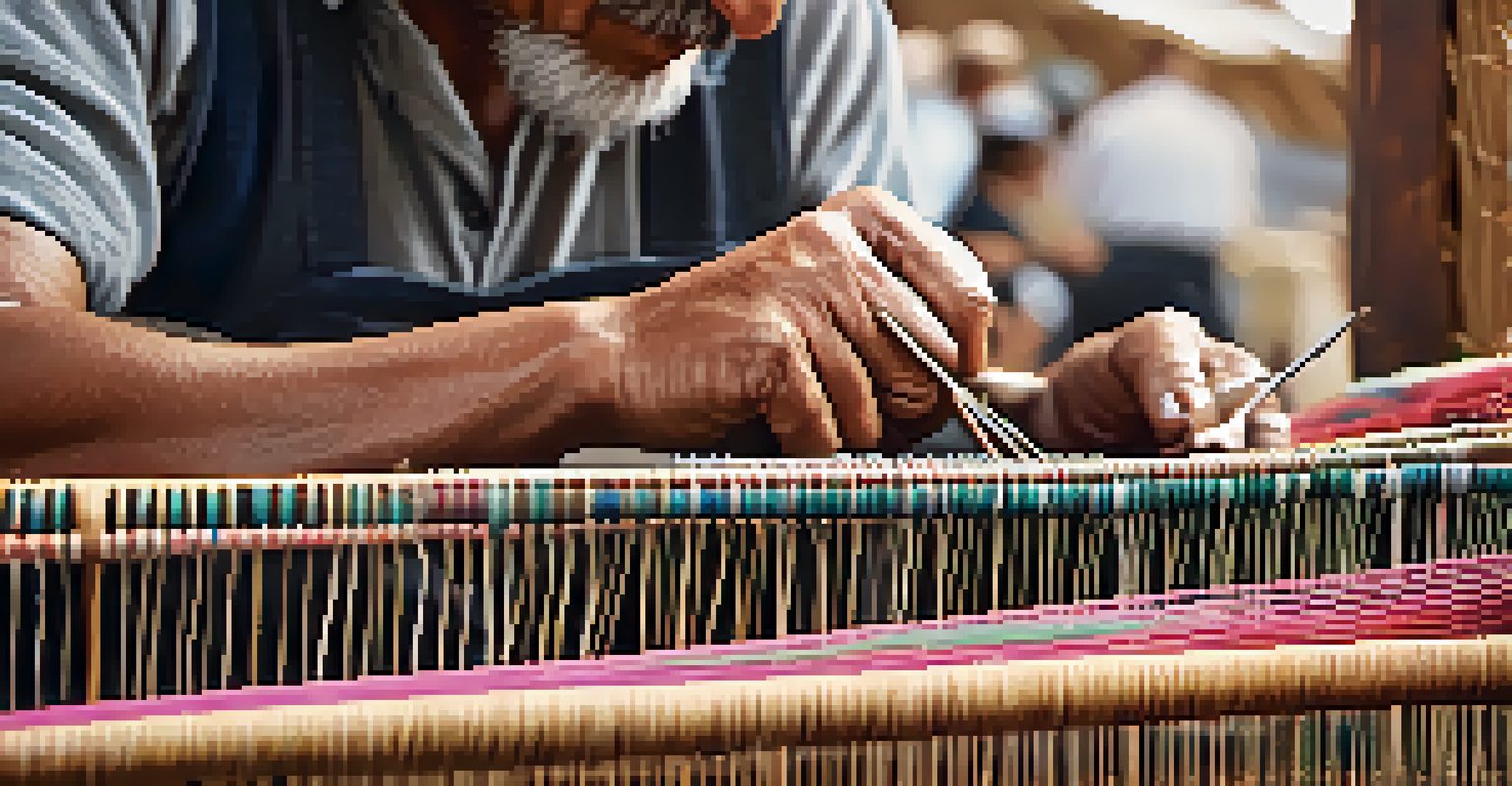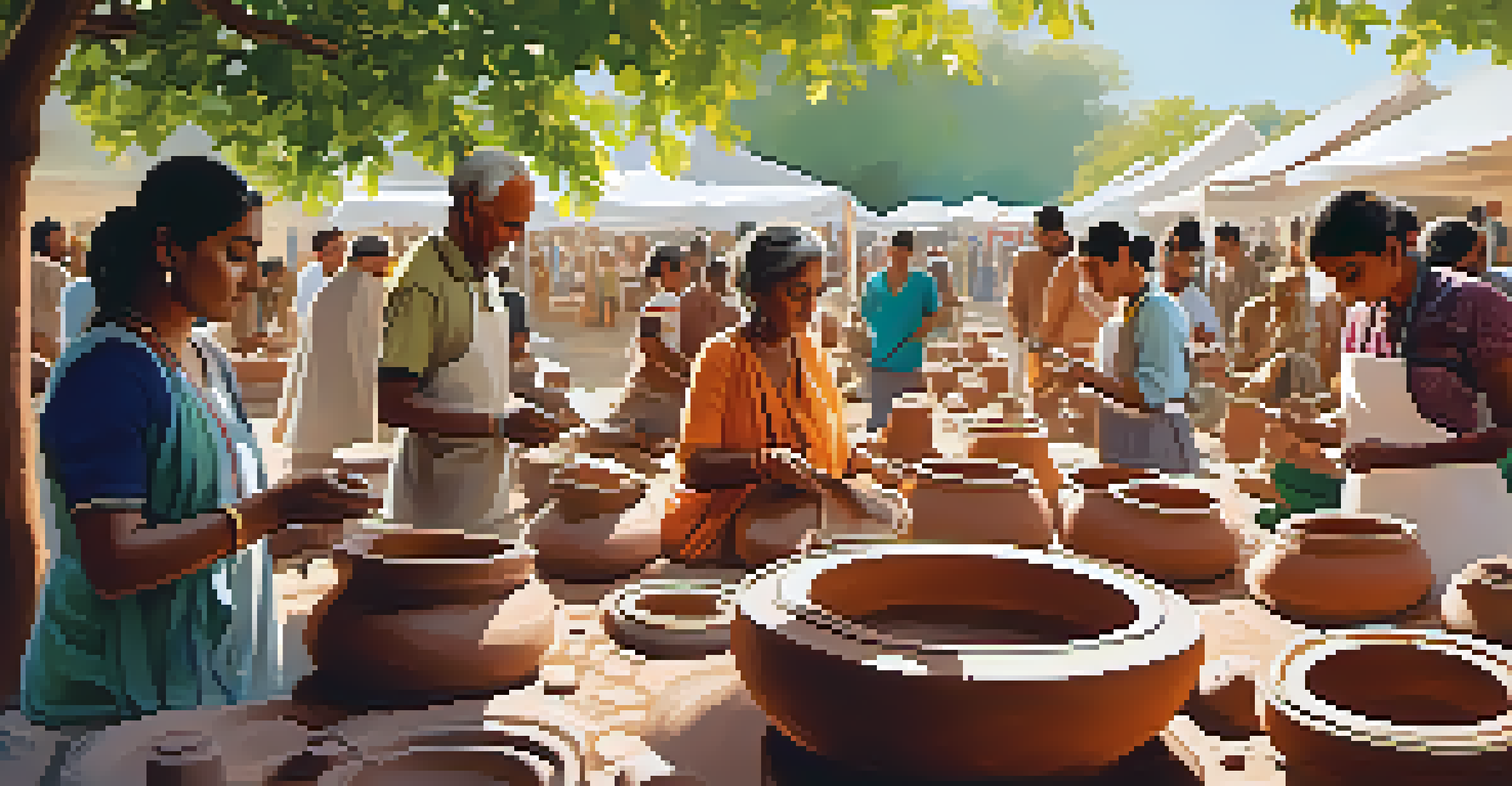How to Prepare for Your First Indian Art and Craft Fair

Understanding the Essence of Indian Art and Craft Fairs
Indian art and craft fairs are vibrant celebrations of culture and creativity, showcasing the rich heritage of the country. Each fair is more than just a marketplace; it’s an experience that brings together artisans, buyers, and art enthusiasts. Understanding this essence can help you appreciate the diversity and depth of the crafts on display.
Art is not what you see, but what you make others see.
These fairs often feature a wide range of products, from handwoven textiles to intricate pottery and traditional paintings. Each item tells a story, reflecting the artisan's personal journey and the history of their craft. By immersing yourself in this environment, you gain insights into the skills and traditions that define Indian craftsmanship.
As you prepare for your first fair, keep in mind that it’s not just about shopping; it’s also about connecting with artists and learning about their work. This connection can deepen your appreciation for the crafts and make your experience much more rewarding.
Researching the Fair: Know What to Expect
Before attending the fair, take some time to research the event. Check the official website or social media pages for details about the location, dates, and featured artisans. This information can help you plan your visit effectively and ensure you don’t miss out on any must-see exhibits.

Understanding the layout of the fair can also enhance your experience. Many fairs have maps available that indicate where different crafts are showcased. Familiarizing yourself with these layouts can save you time and help you navigate the bustling environment more easily.
Immerse in the Fair Experience
Attending Indian art and craft fairs is not just about shopping; it’s an opportunity to connect with artisans and learn about their unique crafts.
Additionally, look for any workshops or demonstrations that may be offered during the event. Participating in these activities can provide you with hands-on experience and a deeper understanding of the crafts that pique your interest.
Setting a Budget for Your Fair Experience
Attending an art and craft fair can be both exciting and overwhelming, especially when you see so many beautiful items. To keep your spending in check, it’s important to set a budget beforehand. Consider how much you’re willing to spend on crafts, food, and any activities you might want to participate in.
The best part of art is that it allows you to connect with others through shared experiences and emotions.
A good tip is to allocate your budget into categories, such as a specific amount for handmade items, snacks, and experiences. This way, you can prioritize your purchases and ensure you don’t overspend on one category, leaving less for others. Carrying cash can also be helpful, as some vendors may not accept cards.
Remember, while the goal is to enjoy the fair, sticking to your budget will ensure you have a stress-free experience. Plus, it can be extra rewarding to find unique pieces within your set limits!
Choosing the Right Attire for Comfort and Style
Comfort is key when attending an art and craft fair, as you will likely be walking around for hours. Consider wearing comfortable shoes that allow you to explore freely without discomfort. Opt for breathable fabrics, especially if the fair is outdoors, to keep cool and comfortable throughout the day.
While comfort is essential, you can still express your personal style. Wearing something that reflects your appreciation for art or local culture can make you feel more connected to the event. For instance, a colorful scarf or a handmade accessory can serve as great conversation starters with artisans.
Engage with Artisans Personally
Building relationships with artisans enhances your experience and supports the sustainability of their crafts and local economies.
Lastly, don’t forget to bring a light jacket or umbrella if the weather looks unpredictable. Being prepared for changes in weather can help you enjoy the fair without any interruptions.
Engaging with Artisans: Building Connections
One of the most rewarding aspects of attending an art and craft fair is the opportunity to meet the artisans behind the creations. Take the time to engage in conversations with them; ask about their techniques, inspirations, and the stories behind their work. This not only enriches your experience but also supports the artisans by showing interest in their craft.
Many artisans love sharing their knowledge and passion, so don’t hesitate to ask questions. You might learn about the intricate process of creating handmade goods or discover unique pieces that resonate with you. These interactions can lead to meaningful connections and even future collaborations.
Moreover, by supporting local artisans and building these relationships, you contribute to the sustainability of their craft and the local economy. It’s a win-win situation that fosters community and mutual appreciation.
Exploring Diverse Art Forms and Techniques
Indian art and craft fairs are a treasure trove of diverse art forms, each with its unique techniques and cultural significance. From traditional Madhubani paintings to exquisite block prints, the variety is astounding. Take your time to explore different stalls and appreciate the artistry involved in each piece.
As you explore, consider attending demonstrations or workshops if available. These sessions can provide insight into specific techniques and allow you to try your hand at creating something unique. Engaging directly with the art-making process can enhance your appreciation for the crafts on display.
Capture the Vibrant Atmosphere
Photographing the fair allows you to preserve memories and share the artisans' work with a wider audience, fostering appreciation for their art.
In addition, don’t hesitate to ask artisans about their creative journeys and the cultural significance of their work. Understanding the stories behind the art can transform your perspective and help you select pieces that resonate on a deeper level.
Capturing Memories: Photography Tips for the Fair
Capturing the vibrant atmosphere of an art and craft fair can be a delightful way to preserve your experience. Bring a camera or use your smartphone to take pictures of the colorful stalls, intricate crafts, and even the artisans at work. However, always ask for permission before photographing someone’s work or their stall.
When taking photos, try to capture the details that make each piece unique. Close-up shots of textures, patterns, and colors can convey the craftsmanship involved. Also, don’t forget to photograph the overall environment to encapsulate the fair's energy and spirit.

Lastly, consider sharing your photos on social media to spread the word about the artisans and the fair itself. Tagging the artisans can help connect them with a broader audience, allowing their work to reach those who appreciate it.